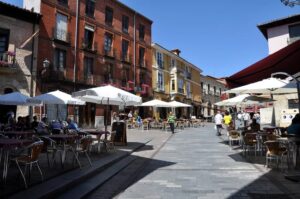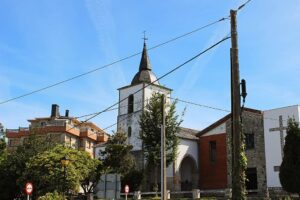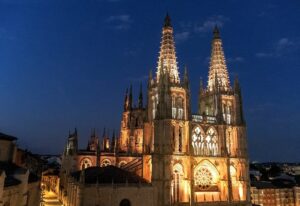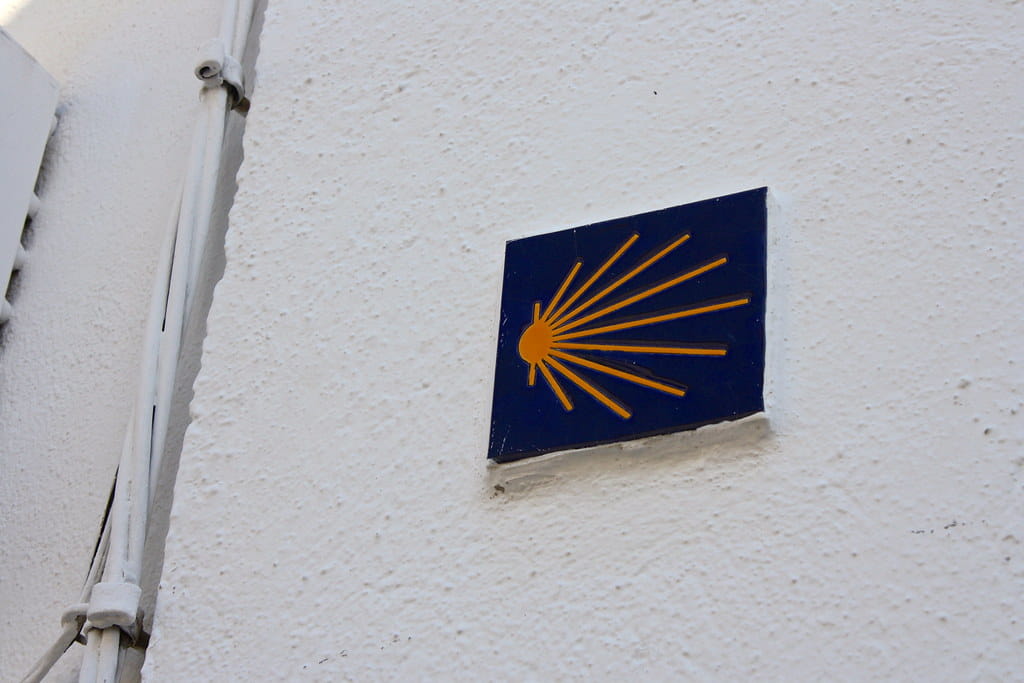
The Mozarabic Way is one of the historic pilgrimage routes in Spain, leading pilgrims from the south of the Iberian Peninsula to Santiago de Compostela, combining religious devotion with a profound cultural experience. Its name originates from the Mozarabs, Christians who lived under Muslim rule during the Islamic occupation of Spain.
Despite the religious and cultural differences of the time, the Mozarabs kept their Christian traditions alive. They developed routes that allowed them to pilgrimage to Santiago de Compostela, one of the most important destinations in medieval Christendom.
This route is also notable for its ability to connect culturally diverse regions, from cities in Andalusia such as Granada and Córdoba, to northern Spain. Over the centuries, it has served as a symbol of peaceful coexistence and cultural exchange between Christians and Muslims.
Today, walking the Mozarabic Way offers the chance to relive history, experience spirituality, and enjoy the diversity of landscapes and cultures that Spain has to offer. Before we continue, we would like to note that this text is informational, and at Mundiplus, we do not operate in this area.
Índice de contenidos
- 1 History of the Mozarabic Way
- 2 The Original Route
- 3 Geography and Notable Stops on the Mozarabic Way
- 3.1 As you can see, there isn’t a single, uniform route (it can start from Almería, Jaén, Málaga, or the aforementioned Granada and Córdoba), and it is actually a network of paths with final destinations such as Mérida or Badajoz. Therefore, we will not discuss the specific itinerary, but rather highlight the main points of interest.
- 3.2 Granada
- 3.3 Córdoba
- 3.4 Mérida
- 3.5 Badajoz
- 4 Preparing for the Pilgrimage on the Mozarabic Way
History of the Mozarabic Way
The Mozarabic Way dates back to the time of the Reconquista in the Iberian Peninsula, when the Mozarabs (Christians living under Muslim rule) sought to preserve their faith and traditions in a predominantly Islamic environment.
These Christians developed a series of routes to pilgrimage to Santiago de Compostela, in line with the spirit of pilgrimage that was widespread across Europe during the Middle Ages. As Christian kingdoms began to reconquer territory, these routes became more significant as religious pilgrimage paths and as routes for cultural and economic exchange.
The Mozarabs, with their blend of Christian and Muslim influences, left a profound cultural legacy along the route. This can be seen in the architecture, language, and customs that still persist in the regions they passed through.
The Original Route
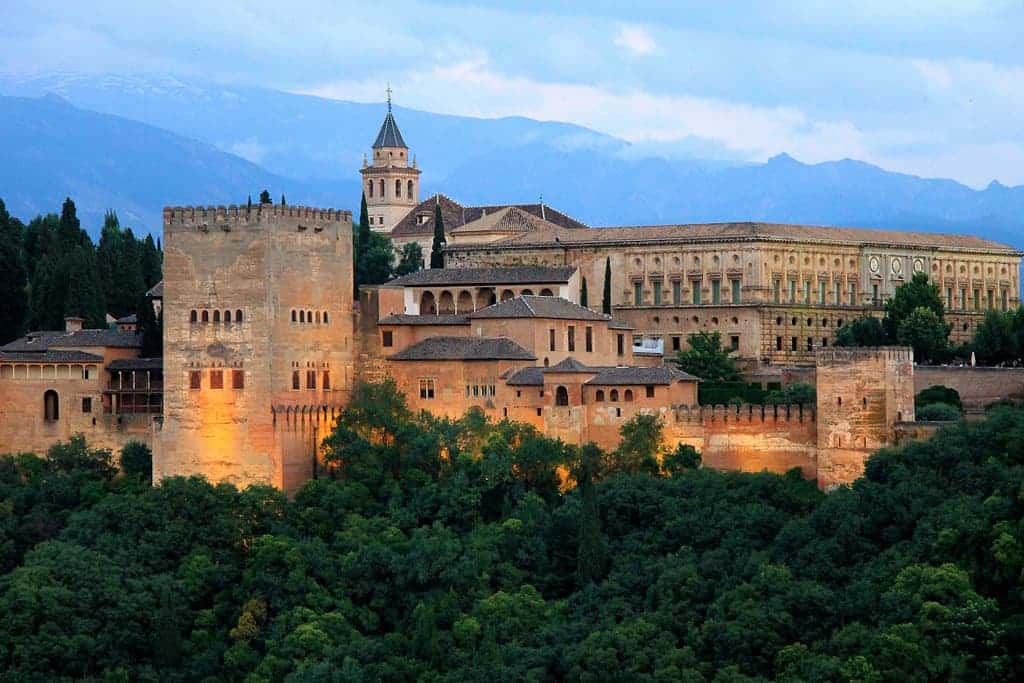
The original route began in several major cities in southern Spain, such as Granada, Córdoba, Málaga, and Almería, crossing the Andalusian region.
Pilgrims from these cities travelled north, passing through historic cities such as Mérida and Badajoz. From Mérida, many would take the Vía de la Plata, another ancient Roman road connecting the south to the north of Spain, thus facilitating the connection.
This route not only gave pilgrims the opportunity to reach their final destination in Santiago, but also allowed them to connect with other parts of Europe. The Vía de la Plata was a trade route that allowed the passage of goods, people, and cultures, making the Mozarabic Way a vital link between southern Spain and the rest of the continent.
The Mozarabic Way and Its Connection to the Camino de Santiago
A travel agency for the Camino de Santiago can offer an itinerary that includes both the Mozarabic Way and the Vía de la Plata, providing pilgrims with the opportunity to experience the cultural and geographical diversity of the route.
For those wishing to explore further, there is also the option to extend their pilgrimage by taking a walk along the Portuguese Coastal Way. This route offers stunning views of the Atlantic and allows pilgrims to experience the rich tradition of the pilgrimage from Portugal to Galicia.
Additionally, the experience of the Camino from Baiona presents an alternative for those who wish to start their pilgrimage in a coastal setting.
Similarities and Differences with the Camino de Santiago
The Mozarabic Way shares several features with other Camino routes to Santiago de Compostela, such as the French Way and the English Way, but it also has its own particularities.
- In terms of landscape, it offers a diverse experience, including the mountains of Sierra Nevada and the plains of Extremadura. In contrast, the French Way to Santiago from Roncesvalles crosses the Pyrenees and the rolling hills of northern Spain.
- Meanwhile, the English Way to Santiago from Ferrol offers a shorter route along the Atlantic coast of Galicia.
- On the other hand, the French Way is known for its extensive network of infrastructure and its more established tradition.
- Finally, the Map of the Portuguese Coastal Way offers a perspective on the shared historical legacy between Spain and Portugal.
Geography and Notable Stops on the Mozarabic Way
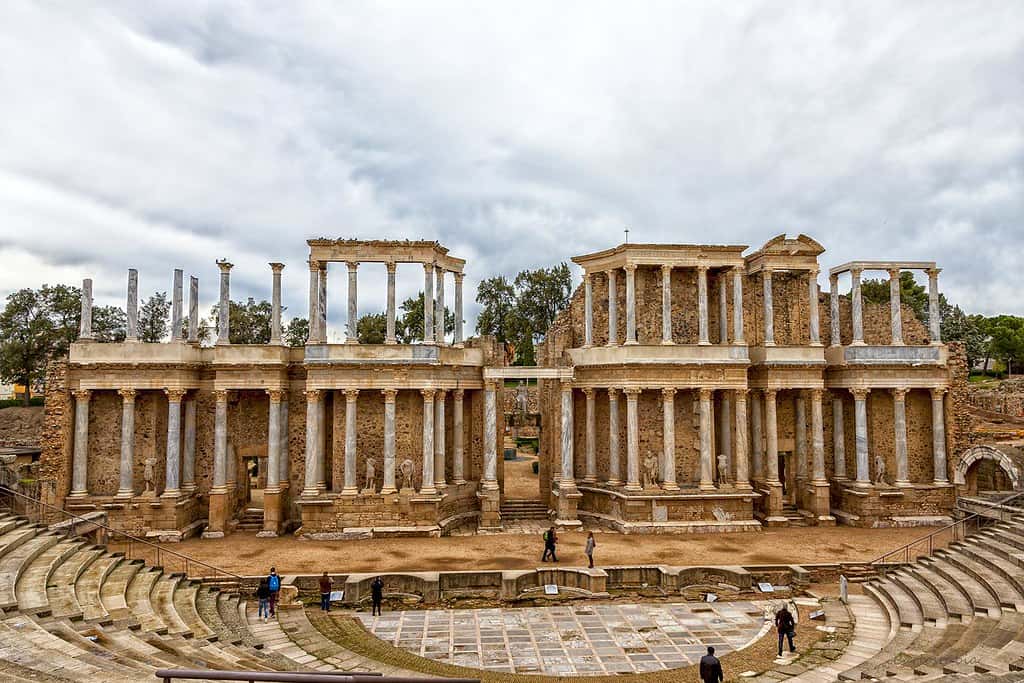
As you can see, there isn’t a single, uniform route (it can start from Almería, Jaén, Málaga, or the aforementioned Granada and Córdoba), and it is actually a network of paths with final destinations such as Mérida or Badajoz. Therefore, we will not discuss the specific itinerary, but rather highlight the main points of interest.
Granada
Granada is a significant starting point for many pilgrims embarking on the Mozarabic Way. This city, famous for its impressive Alhambra and its Moorish streets, offers a rich cultural and historical experience before pilgrims begin their journey to Santiago de Compostela.
In addition to the Alhambra, pilgrims can explore the Albayzín, an ancient Moorish neighbourhood with cobbled streets and panoramic views of the city and the surrounding mountains. The Granada Cathedral, built on the site of the former mosque, is also a significant point of interest, symbolising the rich history of cultural and religious coexistence in the region.
Córdoba
Likewise, Córdoba is another key stop, a city with a deep cultural and religious heritage. The Córdoba Mosque-Cathedral, one of Spain’s most iconic monuments, is an essential stop for pilgrims. Originally built as a mosque during Muslim rule, it was converted into a cathedral after the Christian Reconquista.
In addition to the Mosque-Cathedral, pilgrims can visit the Alcázar de los Reyes Cristianos, a fortress-palace with beautiful gardens and views of the Guadalquivir River. These stops not only provide rest for pilgrims but also offer an opportunity to reflect on the historical and spiritual richness that has shaped the Mozarabic Way.
Mérida
Mérida was one of the most important cities of the Roman Empire in the Iberian Peninsula. Pilgrims passing through Mérida can marvel at the Roman Theatre, still in use for theatrical performances; and the Roman Bridge crossing the Guadiana River, one of the longest and best-preserved Roman bridges in the world.
The Aqueduct of the Miracles and the Temple of Diana are other notable examples of the city’s rich Roman heritage. Mérida not only offers a glimpse into the splendour of Roman times but also allows pilgrims to connect with the ancient history that shaped Spain.
Badajoz
Finally, Badajoz is a strategically important city on the Mozarabic Way. Located near the border with Portugal, it has been a crucial defensive point in Spain’s history, especially during the Reconquista and border wars.
The Alcazaba of Badajoz, one of the largest Muslim fortresses in Europe, dominates the city and offers a stunning panoramic view of the surrounding landscape. It is also known for its rich cultural tradition and vibrant old town, where pilgrims can enjoy the local hospitality before continuing their journey.
Moreover, its strategic location on the route to Santiago de Compostela makes it a natural rest point for pilgrims heading north. It allows them to replenish and prepare for the challenges that lie ahead in their pilgrimage.
Preparing for the Pilgrimage on the Mozarabic Way
Preparing to walk the Mozarabic Way requires careful planning, particularly because of the diverse landscapes and the length of the route. From choosing the right gear to understanding the available infrastructure, pilgrims must be well-informed to ensure a safe and enriching experience.
To complete this route, it is essential to have the appropriate equipment. Pilgrims should wear comfortable and sturdy hiking boots, and bring clothing suitable for varying weather conditions. They will also need a lightweight but well-equipped backpack with essentials such as water, energy snacks, sunscreen, and a first aid kit.
The best time to walk the Mozarabic Way is in spring (April to June) and autumn (September to October), when temperatures are more moderate and the weather is more favourable for long walks. Novice pilgrims should start with shorter stages and gradually increase the distance covered each day to better acclimatise to the physical effort.
Infrastructure and Accommodation
Along the Mozarabic Way, pilgrims will find a variety of accommodation options, ranging from pilgrim hostels to guesthouses and small rural hotels.
Many of these hostels are run by volunteers and offer an affordable and welcoming place to rest after a day’s walk. The hostels often provide beds in shared rooms, communal bathrooms, and, in some cases, kitchens where pilgrims can prepare their own meals.
For those who prefer a bit more comfort, guesthouses and rural hotels along the route offer private rooms and additional services such as meals and laundry. It is recommended to book in advance during peak seasons to secure a place, especially in the smaller hostels.
The infrastructure along the route has improved in recent years, adapting to the needs of modern pilgrims, making for a more comfortable and accessible experience for all.




